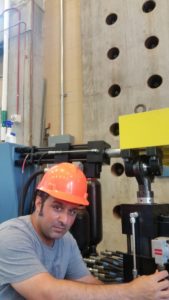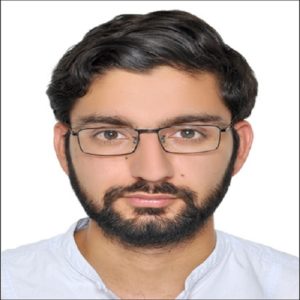Before students have real-world experience and a chance to showcase their knowledge in a multidisciplinary setting, they may benefit by taking initiative to grow their knowledge through an interdisciplinary approach. While a multidisciplinary approach involves people from different disciplines collaborating together, an interdisciplinary approach involves an individual or team integrating and synthesizing knowledge from across a variety of disciplines. Both are important to advancing engineering and bridging the gap between academia and industry. Studies show that across disciplines, students who pursue an interdisciplinary approach to their education are better able to experience growth, creativity and problem-solving in the workplace because they aren’t stuck in silos, but rather are able to think beyond boundaries.
Two CEE graduate students are using an interdisciplinary approach to their research to gain greater insights as they tackle challenging problems.
Abdollah Javidialesaadi, whose research is focused on structural dynamics and structural control, says, “We are civil engineers, so we are looking at these issues from our perspective, which is different from the mechanical engineering point of view.”

Javidialesaadi recently took courses in mechanical engineering at UT. One of his research goals is to develop applied mechanical devices to protect structures against wind and earthquakes. Because of that, he needed to grow his knowledge of both civil and mechanical engineering and become more fluent in the concepts presented in engineering journals focused on dynamics and control of structures.
“I think an interdisciplinary approach helped me to think broadly and deeply about my research,” he said. “Taking courses outside of the department helped me to think better about my research and also helped me to better understand research papers related to my works in mechanical engineering journals.”

Another student using this approach to advance his knowledge is Mohmad Mohsin Thakur who joined the CEE department in 2016 to pursue his PhD in the field of Geomechanics.
“The beauty of any research problem is that it does not know whether you are an engineer, physicist or even a philosopher,” says Thakur. Part of his research involves looking at projectile penetration in sands at high strain rates, which is a multiphysics problem that involves complex phenomenon such as dynamic fracturing, material phase change and pore scale displacements.
“To capture the physics of the problem, it is essential to understand the material behavior at multi-scales by integrating experimental findings into the numerical models to provide a better theoretical framework,” says Thakur. “The fundamental understanding of this kind of work is not limited to my research problem but transcends different fields of science with implications in oil recovery, drug delivery, CO2 sequestration.”
Thakur claims that the multidisciplinary approach has helped him to view his research problem from a completely different perspective and provided him a platform to talk to professors and experts in different fields. “The project-based learning in many of the multidiscipline courses I took also helped me to learn different tools and software,” he says.
To understand the effect of surface forces at the molecular level in partially saturated granular media, Thakur took a course on molecular dynamics in the Department of Material Science and Engineering at UT. He also took mathematics and computer science related courses to provide him skills to model the material behavior in a numerical framework. He also credits his advisor, CEE Professor Dayakar Penumadu, for providing inspiration since he works on interdisciplinary problems not only related to civil engineering but beyond including material science engineering, chemical engineering, and electrical engineering.
Penumadu acknowledges that the future of engineering should be focused on inter- and multi-disciplinary approaches.
“Too long, innovation in engineering has fallen behind due to silo structures where students and faculty are put in confined bins with a department title and focus largely based on past literature and state-of-the-practice,” he says. “This model of education is no longer relevant. The modern era of education is going to be successful for engineering majors if these artificial demarcation lines are eliminated.”